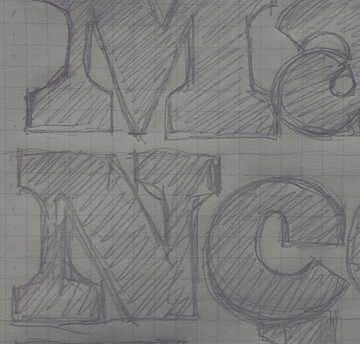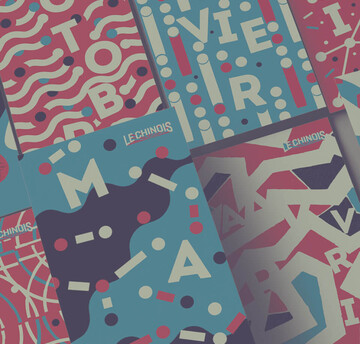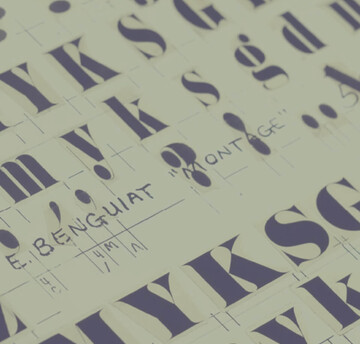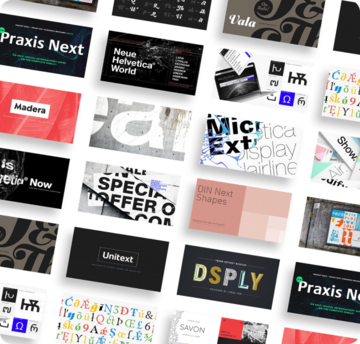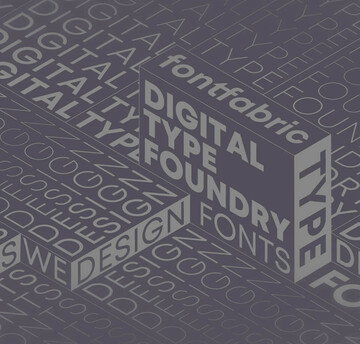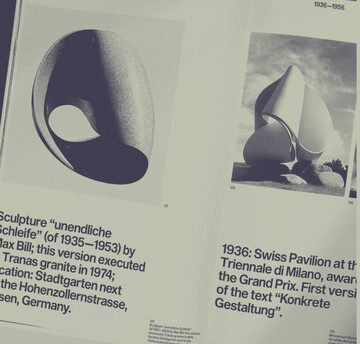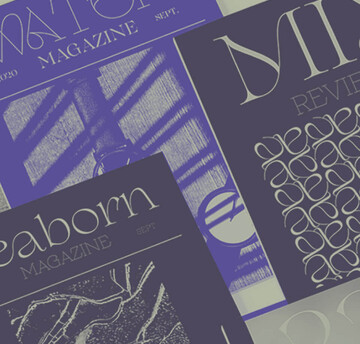Font Licenses: Company desktop vs Legacy desktop.
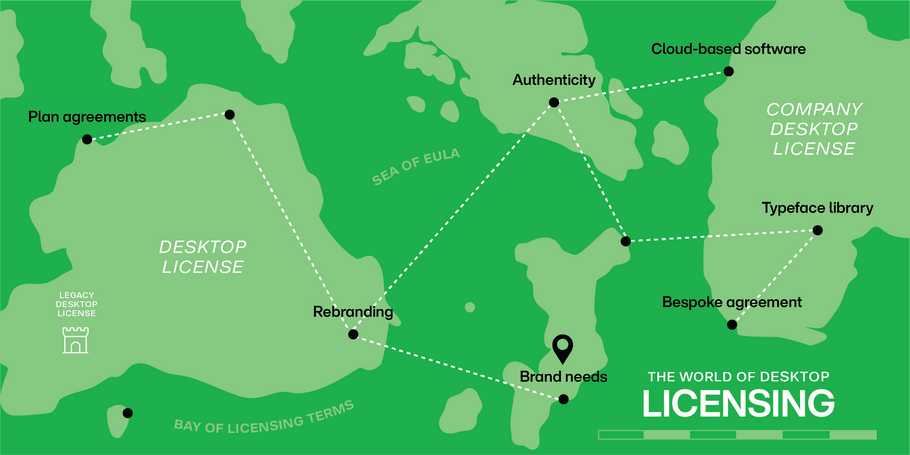
What is the difference between a Company Desktop License and a, well, regular Desktop License? When it comes to font licensing, when does it make sense to join the cloud crowd? Let’s (type)face it, making licensing decisions can feel dicey, that is, unless you have a board game-themed infographic guiding you through the process.
Game on! Your company wants to level up its branding with consistent fonts, colors and designs across internal documents, presentations and templates. Meanwhile, cloud-based tools are transforming the sharing processes across the organization. Are your old desktop font licenses up to the task? Let’s find out.
The first move is understanding the differences between a standard Desktop License and two lesser-known iterations: a legacy Desktop License and a Company Desktop License.
• With a Desktop License you can use software on a specified number of computers in accordance with the license agreement (EULA), such as limiting font use to static and image formats. These are the most common font licenses with most companies having, or having had, Desktop Licenses in use somewhere in their organization.
• A legacy Desktop License simply refers to an active Desktop License based on a EULA that is no long on offer. These are less common thanks to changes inside and outside organizations.
• A Company Desktop License allows you to upload fonts on cloud servers to share use and access rights across a company and any approved third parties (e.g. freelancers) subject to certain restrictions in the EULA. This is a new add-on license open to Monotype Font Users to extend a Desktop License.
Check out our full legal licensing terminology guide here.
The second move is spotting key changes caused the licensing landscape to shift.
- 2006-2011: Disks are out and cloud technology is in!
- 2011-2015: Spread of smartphones expands remote working possibilities.
- 2016-2019: Social media platforms reach an influential high in business and culture along with marketing opportunities to extend the reach of branding assets e.g. fonts.
- 2020-2024: Pandemic normalizes remote working, post pandemic ‘normal’ proves importance of cloud-based software access rights.
How does one plan for the when the present keeps changing? Sometimes, it helps to look backwards to see forward. Can you spot the five big changes that made cloud-sharing a standardized process?
With Monotype, all Plan Agreements have remained substantially unchanged. And while all of them include the fundamental Desktop License, one key change across our Plans, is the requirement “to procure a Company Desktop License for the size and scope of your company”. As a newly introduced add-on feature, old legacy Desktop Licenses may not include this term. But why should that mean that legacy Desktop License holders shouldn’t take advantage of one? Luckily, our Bespoke Agreements allow our customers to customize an existing Plan to suit their specific business needs. Often, this includes adding a Company Desktop License.
Check out our guide on Plan vs Bespoke agreements here.
The third move is appreciating the reasons for upgrading your legacy Desktop Licenses to an expanded Company Desktop License. Do your creatives work remotely? Do all teams who need access to font files know where to find them? Company Desktop Licenses are designed to suit these new sharing practices.
| Desktop License | Company Desktop License |
| Standard Requires company desktop license to reflect size and scope of organization. | Likely included on purchase. Check your EULA. |
| Legacy May not require company desktop license. | Likely not included on purchase, give us a call to add it! |
If you have a desktop license that includes a Company Desktop License, you can share font files across your organization without worrying about workstation restrictions. If you have a legacy Desktop License, you may want to consider checking your EULA compared with the current size, scope and font requirements in your organization.
Whether or not your existing Desktop License requires a Company Desktop License, there’s a reason why they are popular in this design renaissance. With the changes to a size and scope of an organization, or simply with the adoption of new technology, comes significant changes to how digital assets are shared between teams. License agreements define ‘use’, and when use changes so must the license.
If your organization is ready to level up their font licensing game, whether as an existing Monotype fonts user or as a new customer, give our font licensing experts a call and find out how you can add a Company Desktop License to your font license strategy. What are you waiting for? It’s your move.
